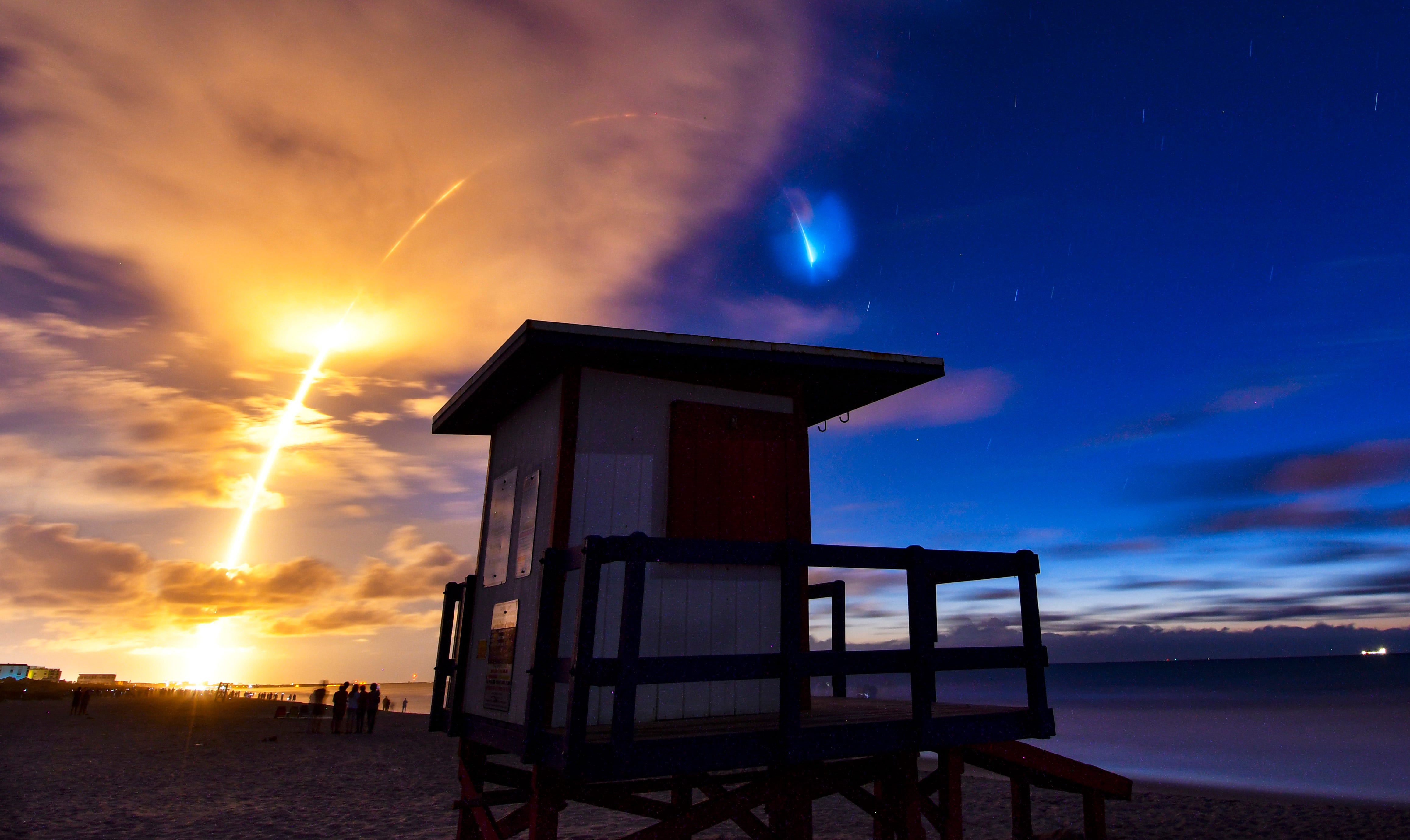
When a SpaceX Falcon 9 rocket launches from Kennedy Space Center Thursday late afternoon, it'll officially push the company's Starlink efforts into the double digits and act as a reminder that multitudes more are still on the way.
Slated for a 4:39 p.m. liftoff from pad 39A, the tenth launch of roughly 60 internet-beaming Starlink satellites will push the constellation's size to nearly 600 in low-Earth orbit. Weather for the 10-minute window is expected to be 40% "go," according to the Space Force.
After liftoff, the rocket's 162-foot first stage will target an automated drone ship landing in the Atlantic Ocean. It should return to Port Canaveral for checkouts and refurbishment a few days later.
Thursday's launch is yet another in SpaceX's 2020 cadence, which to date has produced 10 total launches. If schedules hold, the Space Coast could see at least that many more before the year is out thanks to a combination of Starlink, commercial, and military missions.
With this tenth launch of Starlink, SpaceX appears to be inching ever closer to its goal of opening up broadband services on the ground. Private beta testing is expected to open this summer for users such as early investors, while a public beta should begin this fall for those in the higher latitudes of North America.
To access the constellation, users just need a pizza box-sized, circular antenna known as a ground terminal.
"Just two instructions for Starlink: plug in and point at sky," SpaceX CEO Elon Musk said via Twitter last week. "Can be done in either order."
Internet access via satellite isn't new. For decades, various companies, including Microsoft-supported Teledesic in the late 1990s, have attempted to monetize the potential for anyone in any location on Earth to use broadband internet, but most have failed. Some were smaller spacecraft in low orbit, while others have been larger satellites thousands of miles above Earth.
But the distance of those geostationary satellites means the delay between asking for a data transfer and it actually occurring – known as latency – is a real challenge. Measured in milliseconds, the average terrestrial internet user can expect somewhere under 100ms to be sufficient. Most in-home service these days can deliver 50ms or less, according to internet infrastructure company Cloudflare.
One of Starlink's advantages is that its satellites sit roughly 340 miles above Earth, a distance that allows SpaceX to reduce latency. CEO Elon Musk expects current performance at around 20ms.
"It’s designed to run real-time, competitive video games," he said last week. "Version 2, which is at lower altitude, could be as low as 8ms latency."
During previous conferences with reporters, Musk has emphasized that SpaceX doesn't need to have tens of thousands of satellites in orbit to start effectively delivering service – it could begin with as few as 1,000. Having more in orbit affords the ability to attract more customers from different regions, as well as improve performance in areas already being served.
In regulatory filings, the company has said it could launch as many as 40,000 of the flat spacecraft, though that remains to be seen. As it stands, SpaceX will likely consistently launch Starlink missions for the foreseeable future.
Contact Emre Kelly at aekelly@floridatoday.com or 321-242-3715. Follow him on Twitter, Facebook and Instagram at @EmreKelly. Support his space journalism by subscribing at floridatoday.com/specialoffer/.
Launch Thursday
- Rocket: SpaceX Falcon 9
- Mission: About 60 Starlink satellites
- Launch time: 4:39 p.m. ET
- Launch pad: 39A at Kennedy Space Center
- Landing: Drone ship
Follow live updates and video at floridatoday.com/space.
"enter" - Google News
June 25, 2020 at 12:42AM
https://ift.tt/31l4aJY
SpaceX set to enter double-digit launches for Starlink internet constellation - Florida Today
"enter" - Google News
https://ift.tt/2TwxTMf
https://ift.tt/3d6LMHD
Bagikan Berita Ini














0 Response to "SpaceX set to enter double-digit launches for Starlink internet constellation - Florida Today"
Post a Comment